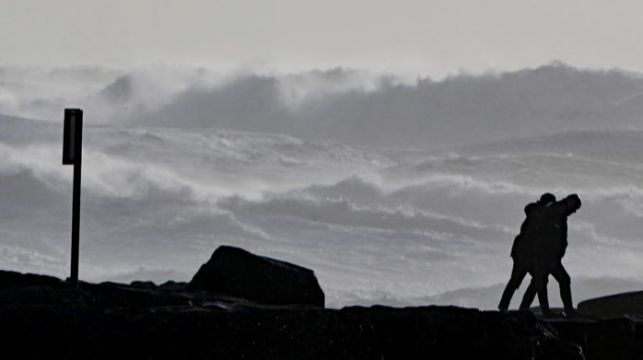Ireland has become wetter and warmer in the three decades since 1991, according to analysis by the national forecaster.
Met Éireann’s analysis of the 1991-2020 climate averages shows the average air temperature during that period compared to the previous 30 years was 0.7 degrees Celsius higher.
Spring saw the greatest temperature rise, with an increase of 0.8 degrees between the two periods’ averages.
The analysis also found that the mean temperatures are higher across the country for all seasons and months in the most recent 30-year period.
The highest rise in average temperatures was during May, which saw a rise of approximately 1 degree, followed by around 0.9 degrees in February, April and November.
The smallest rise was of 0.2 degrees in October, and 0.3 degrees in December; all other months showed a rise of between 0.6 to 0.8 degrees.
Sunshine hours have also increased by around 5 per cent when compared to the 1961-1990 period, with May the sunniest month of the year.
The analysis also shows rainfall has increased by around 7 per cent over the last 30 years when compared to the 30 years from 1961.
This is an annual average rainfall of 1,288mm for the 1991-2020 period.
Average annual rainfall has increased by approximately 3-6 per centin the east of the country and approximately 6-12 per cent across areas of the west and north.
The release by Met Éireann comes ahead of the World Meteorological Organisation’s (WMO) publication in August of the Global Climate Averages for 1991-2020.
Met Eireann updates Ireland’s 30-year climate averages every 10 years, as the WMO mandates that each of its members calculate its 30-year averages and recommend an update each decade.
The period of 30 years is chosen as it is considered long enough to smooth out year-to-year variations.
Met Éireann climatologist and project lead Mary Curley said: “We know that the atmosphere is warming and what we’re seeing at the local and national scale fits the international picture.
“Importantly, the data provides information about typical climate conditions for a particular location and is a crucial benchmark for weather and climate conditions.
“This serves as an important resource for Government and relevant stakeholders to enable informed decision-making to benefit society.”
She added: “While these averages give us an up-to-date baseline to compare our current and future weather to, it’s important to remember that weather patterns can vary significantly from year to year.”
Climate change, driven by human use of fossil fuels, is bringing hotter, drier weather across Europe as well as greater disruption to traditional rainfall patterns.
Met Éireann’s Translate climate projection, released in June, confirms there is the likelihood of a warmer and wetter annual climate for Ireland due to global warming.
It also found that Ireland is likely to experience a 10-fold increase in the frequency of summer nights above 15 degrees, as well as an increasing number of heatwaves, by the end of the century.
It comes amid a brutally hot week across Europe, with heat warnings issued across the continent as temperatures are expected to top 40 degrees.
The WMO has said Europe is warming twice as fast as other continents – the rate of June heatwaves has tripled in Spain in the past 12 years.







